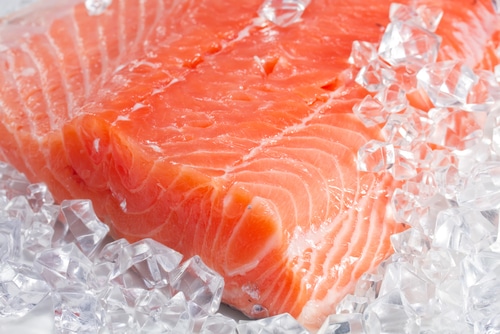
There are some conditions that are obviously inflammation-related, such as asthma and arthritis. However, research indicates that many more chronic illnesses and health conditions may also be linked to inflammation, including heart disease, Type 2 diabetes, stroke, osteoporosis, and even depression.
As a result of more people becoming aware of the health implications surrounding inflammation, the amount of prescriptions written for NSAIDs (non-steroidal anti-inflammatory drugs) and steroidal-based medications has increased. People are very willing to take drugs in an effort to combat the effects of inflammation. What they may not realize is that nature has provided a vast range of natural anti-inflammatory foods that can help to reduce inflammation without the adverse side-effects of pharmaceutical drugs.
Combating Inflammation with Anti-Inflammatory Foods
There are multiple factors that can exacerbate inflammation within your body, including smoking, drinking alcohol, not exercising regularly and being overweight. However, one of the biggest factors associated with chronic low-level inflammation is the food you choose to eat each day.
Inflammation is not a disease. In fact, it’s a vital part of our body’s natural immune response. Without inflammation, we simply can’t heal. It’s only when the level of inflammation is out of control that damage can occur.
The vast majority of Americans choose a diet that is nutritionally deficient in natural anti-inflammatory foods. Manufactured and processed foods contain high levels of omega-6 fatty acids, which can actually make inflammation worse. Yet it’s possible to reduce inflammation by choosing foods that are high in natural omega-3 fatty acids or that contain healthy phytochemicals.
Top Anti-Inflammatory Foods to Add to Your Menu
Oily Fish: Add some oily fish into your weekly meals for their anti-inflammatory properties. You’ll find foods like salmon, tuna, mackerel, sardines, and anchovies contain high levels of omega-3 fatty acids, which are known to reduce inflammation. Always be sure to cook your fish using healthy options. It’s preferable to grill, bake, boil or steam your fish rather than frying it.
Green-Leafy Vegetables: Dark leafy greens, such as spinach, kale, and collard greens are incredibly rich in anti-inflammatory nutrients, including vitamin E. They also contain plenty of other beneficial phytochemicals known to protect the body against inflammation.
Cruciferous Vegetables: Vegetables such as broccoli, cauliflower, and cabbage are excellent for helping to reduce inflammation. Cruciferous vegetables are high in dietary fiber and they’re packed with vitamins and minerals that are beneficial to your overall health.
Onions and Garlic: Far too many people avoid eating onions or garlic due to worry about bad breath. However, onions and garlic are both incredibly rich in beneficial nutrients. They both contain phenolics and flavonoids that have anti-inflammatory properties, as well as the phytonutrient quercetin.
Nuts: Almonds are an excellent source of vitamin E and walnuts contain good levels of omega-3 fatty acids, both of which are great for fighting inflammation.
Peas, Beans, and Legumes: Peas and beans are bursting with antioxidants and phytonutrients, both of which are known to help reduce inflammation. They’re also extremely rich in vitamins and minerals, along with containing high levels of dietary fiber.
Soy: Technically, soy should be included in the legumes and pulses category. However, as it’s such a nutritionally rich food it deserves to be in a category on its own. Soy is an excellent source of plant-based protein. It’s high in dietary fiber and contains plenty of anti-inflammatory nutrients as well. When most people think about eating soy, they immediately imagine processed meat-replacement foods that contain isolated soy protein or soy derivatives. However, the best possible way to take advantage of the health benefits of soy is to eat more tofu or tempeh or edamame beans. Soybeans can be added to soups, casseroles, stir-fry dishes and many other recipes easily.
If you’re concerned about the health effects of inflammation in your body, consider adding these anti-inflammatory foods into your regular meals. Aside from being incredibly rich in nutrients, vitamins and minerals, eating more of these types of foods could be helping to boost your health at the same time.
Related Articles By Cathe:
Are Nuts the Ultimate Anti-Inflammatory Food?
Why Fish Oil Capsules Aren’t the Best Way to Get Omega-3s
Omega-3s: Newly Discovered Anti-Aging Benefits
Do Omega-3 Fatty Acids Speed Up Muscle Recovery After Exercise?
Does Exercise Reduce Joint Inflammation?
Why 20 Minutes of Exercise is a Good Anti-Inflammatory

